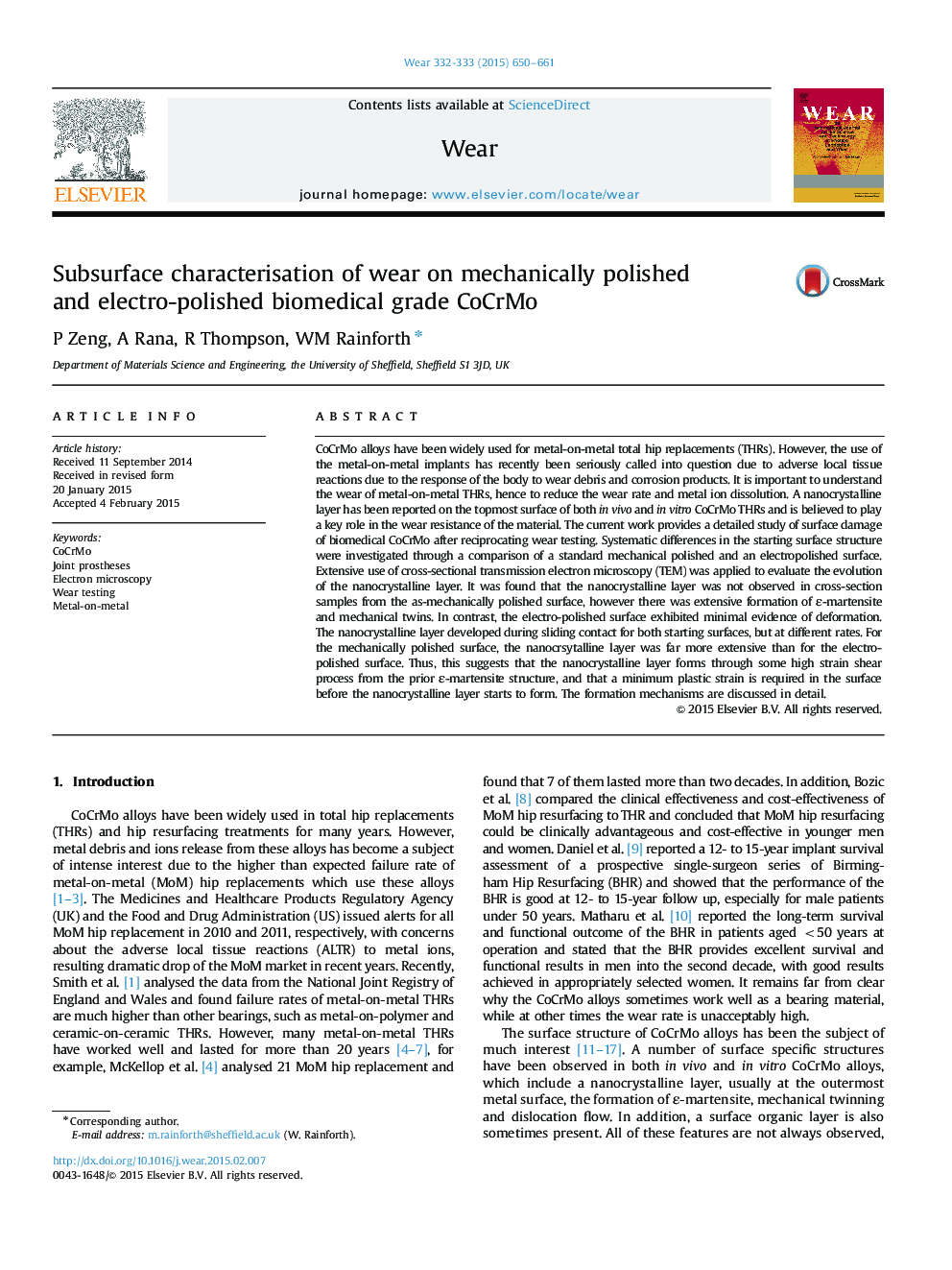| کد مقاله | کد نشریه | سال انتشار | مقاله انگلیسی | نسخه تمام متن |
|---|---|---|---|---|
| 617065 | 1454975 | 2015 | 12 صفحه PDF | دانلود رایگان |
عنوان انگلیسی مقاله ISI
Subsurface characterisation of wear on mechanically polished and electro-polished biomedical grade CoCrMo
دانلود مقاله + سفارش ترجمه
دانلود مقاله ISI انگلیسی
رایگان برای ایرانیان
کلمات کلیدی
موضوعات مرتبط
مهندسی و علوم پایه
مهندسی شیمی
شیمی کلوئیدی و سطحی
پیش نمایش صفحه اول مقاله

چکیده انگلیسی
CoCrMo alloys have been widely used for metal-on-metal total hip replacements (THRs). However, the use of the metal-on-metal implants has recently been seriously called into question due to adverse local tissue reactions due to the response of the body to wear debris and corrosion products. It is important to understand the wear of metal-on-metal THRs, hence to reduce the wear rate and metal ion dissolution. A nanocrystalline layer has been reported on the topmost surface of both in vivo and in vitro CoCrMo THRs and is believed to play a key role in the wear resistance of the material. The current work provides a detailed study of surface damage of biomedical CoCrMo after reciprocating wear testing. Systematic differences in the starting surface structure were investigated through a comparison of a standard mechanical polished and an electropolished surface. Extensive use of cross-sectional transmission electron microscopy (TEM) was applied to evaluate the evolution of the nanocrystalline layer. It was found that the nanocrystalline layer was not observed in cross-section samples from the as-mechanically polished surface, however there was extensive formation of ε-martensite and mechanical twins. In contrast, the electro-polished surface exhibited minimal evidence of deformation. The nanocrystalline layer developed during sliding contact for both starting surfaces, but at different rates. For the mechanically polished surface, the nanocrsytalline layer was far more extensive than for the electro-polished surface. Thus, this suggests that the nanocrystalline layer forms through some high strain shear process from the prior ε-martensite structure, and that a minimum plastic strain is required in the surface before the nanocrystalline layer starts to form. The formation mechanisms are discussed in detail.
ناشر
Database: Elsevier - ScienceDirect (ساینس دایرکت)
Journal: Wear - Volumes 332â333, MayâJune 2015, Pages 650-661
Journal: Wear - Volumes 332â333, MayâJune 2015, Pages 650-661
نویسندگان
P Zeng, A Rana, R Thompson, WM Rainforth,